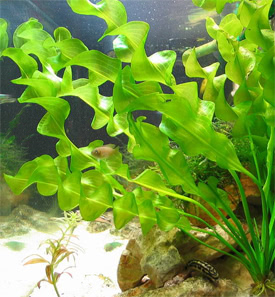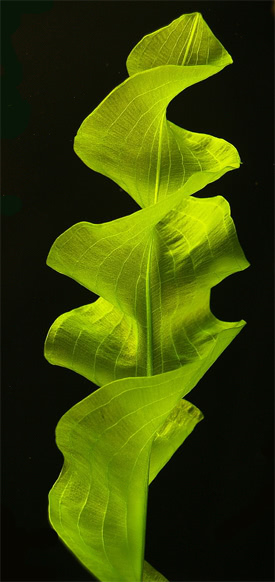
 Magyarul / Hungarian
Magyarul / Hungarian


- Scientific name: Aponogeton ulvaceus
- Synonym: Aponogeton ambongensis
- Common name: Compact aponogeton
- Family: Aponogetonaceae
- Group: Aquarium plants
- Max height: 35-40 cm (somethimes 1m)
- Distribution: Africa; Madagascar
- Habitat: This species occurs in stagnant to fast-flowing, soft but occasionally also loamy water, up to 80 cm deep, in both sunny as well as shady locations, up to an altitude of 1250 m. It populates temporary and permanent waters.
- Substrate: Nutrient-rich
- Placement in aquarium: Background, middleground
- Planting density: 1 plant for 30 cm2
- Lighting needs: Moderate to bright
- Temperature: 24-26°C
- pH: 5,5-8
- Hardness: 6-9 NK°
Description: This aponogeton sports the common wavy-edged leaves of the genus, although the light green 4-6 cm wide leaves often appear smooth, shiny, and slightly freshy. The plant often grows in spurts, producing numerous new leaves before slowing down and eventually shedding the old ones. In bright light it will grow taller.
Aponogeton ulvaceus belongs to the popular and frequently available Aponogetons. Cultivation in both soft as well as medium-hard water, which should display a weak acid to neutral reaction (additional CO2 supply), is easy to achieve. Regular fertilization as well as a nutrient-rich substrate are recommended for more robust and strong specimens. The optimum temperature range is 24-27 °C. Well-growing plants usually feature 30-40 leaves. Whereas this specimen has been growing continuously in an aquarium for several years, the white- and yellow-flowering plants require regular rest periods. In the white- and yellow-flowered forms fertilization will succeed only rarely (cross-pollination is essential), but is more easily achieved in the violet form (self-fertile) .













